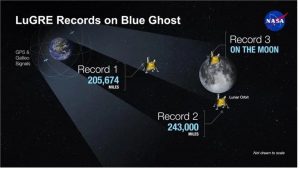NASA’s SPHEREx Mission to Capture Entire Sky via Infrared Technology Every 6 Months
SPHEREx will focus on the background heat of the deep universe. It will try to look for water and complex organic molecules hidden within the gas and dust clouds surrounding planets and stars.

The James Webb Space Telescope (JWST) made headlines when it was announced that the new technology would enable astronomers to get a better view of the sky. The high-resolution telescope would render images using infrared light. However, the JWST has a limited function as it can capture a very small portion of the sky over a few years. To tide over this limitation, NASA’S upcoming SPHEREx mission can be used. According to reports, it can capture almost the entire sky every six months.
The SPHEREx mission, which is scheduled to be launched by April 2024, can capture 99 percent of the sky over a period of six months. It will do so by using infrared technology. In this way, it solves the limitation imposed by the JWST. However, this comes at the cost of the resolution of the image. The images captured by the SPHEREx mission will not be as clear as the JWST.
SPHEREx will focus on the background heat of the deep universe. It will try to look for water and complex organic molecules hidden within the gas and dust clouds surrounding planets and stars. When SPHEREx finds something unusual, astronomers can take the help of JWST to get a closer look at the object.
The JWST will help astronomers to capture the infrared sky in unprecedented detail while SPHEREx will allow researchers to scan the entire expanse of the sky. The JWST will also let scientists see warm planets near their stars, distant galaxies that have dimmed to faint infrared light and much more. The detailed images will contribute to our understanding of the early universe.
The SPHEREx mission has an edge over sky-survey telescopes. That’s because sky-survey telescopes like the Vera Rubin Observatory can capture most of the sky but won’t be useful for infrared astronomy. The Vera Rubin Observatory will capture most of the southern sky every few days but it’s only useful for visible light astronomy whereas SPHEREx will be an infrared instrument.
Astronomers are looking forward to seeing the wonderful images captured by SPHEREx in near future. When it is used along with JWST, the results will surely stun astronomers.



